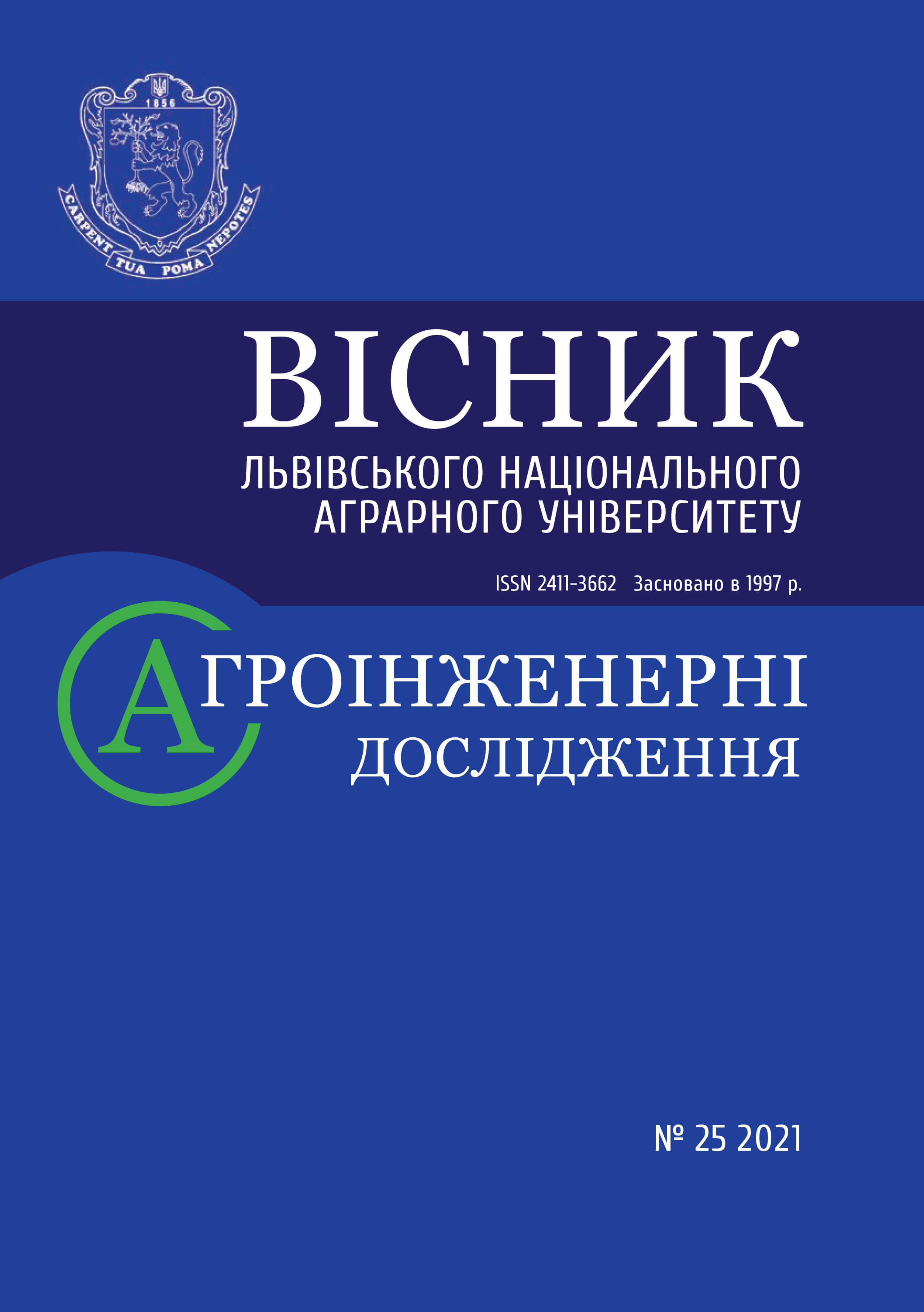Investigation of the relationship between emission of photons of the electro-stimulated winter rape seeds and its sowing qualities
DOI:
https://doi.org/10.31734/agroengineering2021.25.107Keywords:
winter rape seeds, electrical stimulation, electric treatment modes, single photons, emission, germination energy, laboratory germinationAbstract
The article is devoted to the increase of sowing and yield qualities of winter rape seed material due to its pre-sowing stimulation in the electric field of corona discharge.
To reveal the causal relationship between pre-sowing seed treatment modes and its sowing and yield qualities, to optimize treatment parameters and to expand knowledge about the mechanism of biological processes in stimulated seeds, it is proposed to use photoluminescence and time-correlated counting of single photons TCSPC emitted by the seeds in the visible range of the spectrum.
As a result of the conducted researches it is established that absorption and conversion of energy of an external electric field during electro-stimulation of seeds occurs nonlinearly. The main transformations take place during the first 15 s, regardless of the electric field strength. Relaxation processes, which become dominant after 15 s of electrical stimulation, have been identified.
It is proved that pre-sowing electrical stimulation causes improvement of the sowing properties of winter rapeseed. The highest value of germination energy, which was 87 % and exceeded the control by 9 %, was obtained in the treatment mode E = 2 kV/cm, t = 30 s. The results of the determination of laboratory similarity show that under such conditions its value was about 98 against 91 % in the control, exceeding its value by 7 %.
The obtained data correlate with the results of photon emission by the treated seed. At the specified treatment mode
E = 2 kV/cm, t = 30 s, the maximum increase of ultra-low emission of photons, emitted by the treated winter rape seeds was observed. Its value was 287 against 125 in the control. Based on this, it is possible to draw preliminary conclusions that the most efficient mode of pre-sowing electric treatment of seed can be considered the one in which the emission of single photons, emitted by it, is the largest.
References
Dziwulska-Hunek, A., Kornarzyński, K., Matwijczuk, A., Pietruszewski, S., & Szot, B. (2009). Effect of laser and variable magnetic field simulation on amaranth seeds germination. Int. Agrophys., 23(3), 229–235.
Kiełbasa, P., Dróżdż, T., Nawara, P., & Dróżdż, M. (2017). Wykorzystanie emisji biofotonów do parametryzacji jakościowej produktów spożywczych. Przegląd Elektrotechniczny, 93 (1), 153–156.
Lynikiene, S., Pozeliene, A., & Rutkauskas, G. (2006). Influence of corona discharge field on seed viability and dynamics of germination. Int. Agrophys., 20(3), 195–200.
Mahajan, T., & Pandey, O. (2014). Effect of electric field (at different temperatures) on germination of chickpea seed. African Journal of Biotechnology, 13(1), 61–67.
Oziembłowski, M., Dróżdż, M., Kiełbasa, P., Dróżdż, T., Gąsiorski, A., Nawara, P., & Tabor, S. (2017). Ultra słaba luminescencja (USL) jako potencjalna metoda oceny jakości żywności tradycyjnej. Przegląd Elektrotechniczny, 93 (12), 131–135.
Sarkis, J., Boussetta, N., Tessaro, I., & Vorobiev, E. (2015). Application of pulsed electric fields and high voltage electrical discharges for oil extraction from sesame seeds. Journal of Food Engineering, 153, 20–27.
Stašelis, A., Duchovskis, P., & Brazaityte, A. (2004). Impact of electromagnetic fields on morphogenesis and physiological indices of tomato. Int. Agrophys., 18(3), 277–283.
Wang, J., Song, H., Song, Z., Lu, Y., Yinfa Yan, Y., & Li, F. (2020). Effect of positive and negative corona discharge field on vigor of millet seeds. IEEE Access, 8, 50268–50275. doi: 10.1109/ACCESS.2020.2979288.
Zepeda, R., Hernandez, C., Suazo, F., Dominguez, A., Cruz, A., & Martínez, E. (2011). Physical characteristics of maize grain and tortilla exposed to electromagnetic field. Int. Agrophys., 25(4), 389–393.
Zepeda-Bautista, R., Hernández-Aguilar, C., Domínguez-Pacheco, A., Cruz-Orea, A., Godina-Nava, J. J., & Martínez-Ortíz, E. (2010). Electromagnetic field and seed vigour of corn hybrids. Int. Agrophys., 24(3), 329–332.


